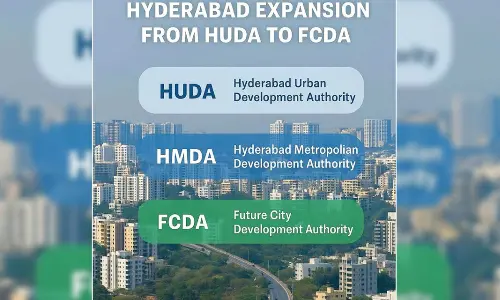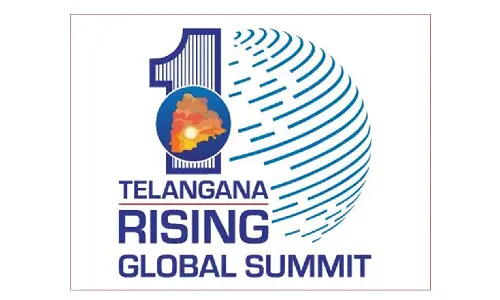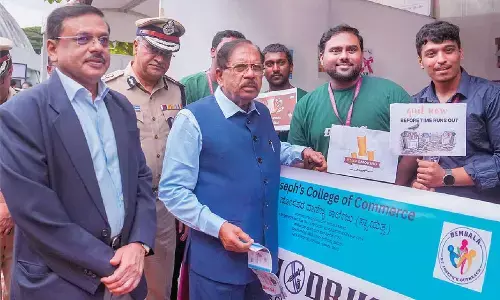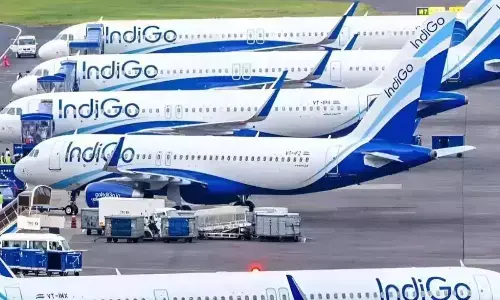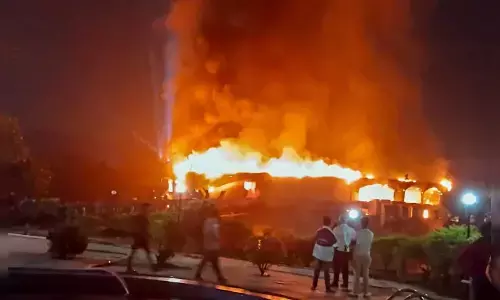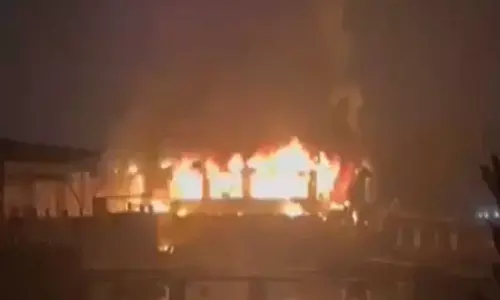Twists and turns in JNU tale blur reality

Sunday marked exactly one week since violence broke out on JNU campus and triggered a multi-dimensional battle of thrones that shows no signs of abating in a hurry.
Sunday marked exactly one week since violence broke out on JNU campus and triggered a multi-dimensional battle of thrones that shows no signs of abating in a hurry.
The opening salvo was fired on January 5, at around 6.30 p.m. by the pro-Left student groups who accused the ABVP of being behind brutal assaults on students at Sabarmati Hostel, by groups of masked, armed people on Sunday evening.
With blood spurting from her wounded forehead, Aishe had alleged that some masked goons had intruded into campus and assaulted students with sticks, at Sabarmati hostel. She emerged as the face of JNU's fight against violence.
The right-wing ABVP vehemently denied the accusations and counter-charged the Leftist students with creating trouble on campus in the first place.
ABVP's JNU unit head Durgesh Kumar narrated their version of the truth. "At about 3 p.m., at least 300 masked pro-Left students had hurled stones at Periyar Hostel and thrashed our activists."
The situation further thickened when a section of JNU teachers voicing their support of the pro-Left narrative. On the other hand, the JNU authorities led by Vice Chancellor Jagadesh Kumar Mamidala immediately issued a statement holding the agitating students responsible for the violence.
"The agitation was led by Leftist student bodies. The protesting students damaged the university communications servers to disrupt winter semester registrations.
Their intent is clearly aimed at disrupting the functioning of the university. This is simply hooliganism and against the ethos of JNU," he said.
With opposition parties rallying behind the left-students and the public perception seemingly behind them, the right wing students went on the defensive.
Over the next couple of days, the pressure began building up on the varsity authorities, as well as the police, who were accused of playing into the hands of the ruling BJP.
The next phase saw a hundred videos and photographs being presented as evidence of the other sides' involvement in the violence.
On January 10, the narrative changed track with the police naming nine suspects, which included Aishe Ghosh too.
The constant twists and turns in the narrative at JNU following the violence on January 5, have only ended up confusing observers.
Meanwhile, both sides have upped the ante and organising outreach programs to strengthen their respective versions of the truth behind JNU's campus violence.
3 years on, Aishe episode mirrors Kanhaiya's tale
With the police naming Aishe Ghosh among the suspects behind the January 5 JNU campus violence, parallels are being drawn between former JNUSU president Kanhaiya Kumar and the present president.
When Delhi Police recently announced the details of nine suspects involved in the campus violence, it included JNUSU president Ghosh - the development had startling resemblance to events of 2016.
It all began on February 9, 2016, when some JNU students organised a protest on campus to mark the third anniversary of Afzal Guru's death, who was hanged in connection with the 2001 Parliament attack.
Despite a last-minute withdrawal of permission by the varsity authorities, the protesters went ahead. Matters took a turn for the worse, when anti-national slogans were raised at the protest meet.
The incident propelled the then JNUSU president Kanhaiya Kumar to the national stage. He contested and lost the parliamentary elections from Bihar in 2019.
With the Delhi Police naming Aishe Ghosh as a suspect in the January violence on campus, the spotlight has turned on her.
But the youngster appears unfazed by the development.
"Yes, I was in the video. But I was not inciting violence or leading the mob. Rather I was trying to pacify them," she said.
"As a leader of the JNUSU, it's my duty to be at such spots to make sure peace and harmony remains on the campus," she added.
The statement echoes the stand taken by Kanhaiya three years ago when he accepted his presence in the controversial video, but had claimed that his slogans were taken out of context.
When a PM stepped in to get JNU protesters off the hook
The scenes of students' protests unfolding at JNU since last year, are a reminder of the university's feisty pedigree.
Over the years, the varsity has continued to figure in the media and public discourse for the controversies that break out on campus regularly.
According to some, the tough approach of JNU authorities and police towards the protesters at present stands out in contrast to an incident that took place around 15 years ago.
It was 2005, when Manmohan Singh was the Prime Minister leading the UPA government -- those were delicate days for Indian diplomacy that was walking the tightrope between the US and Iran at the IAEA.
India went on to support the US in a vote against Iran at the International Atomic Energy Agency (IAEA); a move that did not go down well the Leftist allies of the Congress-led UPA government.
In November of the same year, Prime Minister Singh went to JNU to unveil a statue of Jawaharlal Nehru, the country's First Prime Minister.
The demonstration by some pro-Left student protestors turned out to be the news point of the day as they raised slogans against the Prime Minister. Although the Prime Minister finished his speech and left the campus, tensions continued to flare up with clashes between AISA and NSUI members.
The police intervened and four students were taken into custody. The university administration also moved against the protestors. But subsequently, the students were let off after the Prime Minister reportedly intervened in the matter and asked that they not be harshly dealt with.
Shakil Khan, a Congress leader from Bihar and former JNUSU president (1992-93) said: "Until now, JNU has been an institute which speaks up for democratic rights. However, the previous governments and varsity administrations always saw these protests as the right to expression.
But this government considers protesters and JNU as its enemy."
He went on to add: "They (BJP) believe in kill the enemy strategy. That's why the instance in 2005 and earlier were dealt peacefully, but this time it has burgeoned."
The 2005 episode in JNU's past was raked up recently by Umar Khalid, who along with Kanhaiya was at the epicentre of the JNU controversy in 2016.
On January 9, Khalid tweeted: "In 2005, Manmohan Singh faced black flags in JNU as a protest against his economic policies. It became big news. The administration immediately sent notices to students.
The very next day, the PMO intervened and asked the admininstration not to take any action as protests were students' democratic right."
"PM Manmohan Singh facing sloganeering and black flags from student protestors began his speech by quoting Voltaire: 'I may not agree with what you say, but I will defend to death your right to say it'," Khalid added.
The other side of the coin is spelt out by those who point out that the magnitude and intensity of conflict in the two cases are very different. In January 2020, the campus saw student activists, on opposite sides of the political divide, brutally assaulting each other.
A JNU professor, on condition of anonymity, said: "Protests in 2005 and before were all peaceful and limited to peaceful, verbal spats.
But this time around, students have been running around campus like goons and hitting anyone and everyone in sight. This situation cannot be compared to 2005."
Observers feel that the scale of violence is unprecedented today, making it difficult for the university authorities and police to turn a blind eye to the happenings on campus.









